Lugares de interés (POIs) del Mapa
0: Abusir Necropolis, Egypt

Abusir Necropolis, Egypt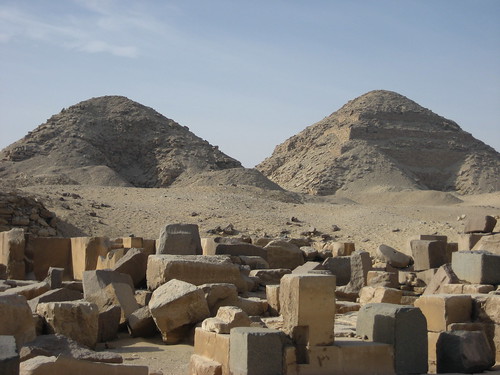
The Abusir Necropolis. Image Attribution: Chanel Wheeler
Abusir is an extensive necropolis of the Egyptian Old Kingdom, which most likely served as a burial place for members of the elite from the then-nearby ancient Egyptian capital Memphis. It probably came into favour after Giza - part of a large "pyramid field" of which Abusir too is part - became subscribed to capacity during the 4th Dynasty.
There are 14 pyramids (of distinctly inferior quality to the sort found at sites such as Giza) at Abusir, which are traceable to various pharaohs of the period. There are also many other types of burial chambers, mortuary temples and funerary monuments. Czech archaeologists have carried out extensive work at the site. In 1988 they discovered the sarcophagus of a priest and palace administrator, Lufaa, dating from 525 BC. Most recently, in 2008, they found a remarkably intact 4,500 year old burial chamber belonging to an upper-middle class Old Kingdom priest Neferinpu.
Read more about the Abusir Necropolis at Heritage Key!
Más sobre Abusir Necropolis, Egypt
1: Chichen Itza, Mexico

Chichen Itza, Mexico
Chichen Itza. Image Attribution: Tomasz Wagner
This sacred and famous site was one of the greatest Maya centres of the Yucatán peninsula, and it bears the hallmarks of 1000 years of history. Many different peoples have left their mark on the city, the Maya and Toltec in particular, in the form of two distinct phases of architecture.
Chichen Itza's most famous structure is the later period "El Castillo" (Spanish for "The Castle") - a massive stepped pyramid. Other notable buildings include the Warriors’ Temple and the circular observatory known as "El Caracol", from where Maya astronomers would once have meticulously watched the heavens. The site was voted one of the New Seven Wonders of the World in 2007.
Read more about Chichen Itza at Heritage Key!
Más sobre Chichen Itza, Mexico
2: Meroe, Sudan

Meroe, Sudan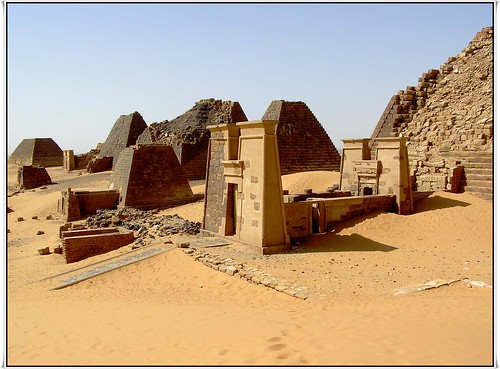
Meroe, Sudan. Image Attribution: Grete Howard
The ancient city of Meroe, situated on the banks of the river Nile, about 200km north of Khartoum in modern Sudan, was once the southern seat of the Kush empire, which spanned both Sudan and some of Ethiopia. According to the Greek historian Diodorus, the first royal tomb was built in the city when Ergamenes, a king contemporary of the Egyptian ruler Ptolemy II, refused the kingdom's tradition that priests, with their words from God, could choose the time of the king's death.
Under the Nubian dynasty of Egypt, Meroe flourished and became a city of importance in the Ancient Egyptian Empire. Exact details of its rulership are scant, yet by the first century AD certainly aspects of Greek and Roman culture were seeping into its history. Rome's capture of Egypt lead to many border struggles and expansion of the Meroitic Kingdom. The Roman historian Pliny noted that the area was lush; the Greek historian Simonides was even said to have lived in Meroe. Buildings at the site include temples, shrines and small dwellings - as well as the bigger palace..
Read more about Meroe at Heritage Key!
Más sobre Meroe, Sudan
3: Pyramid of Cestius, Rome

Pyramid of Cestius, Rome, Italy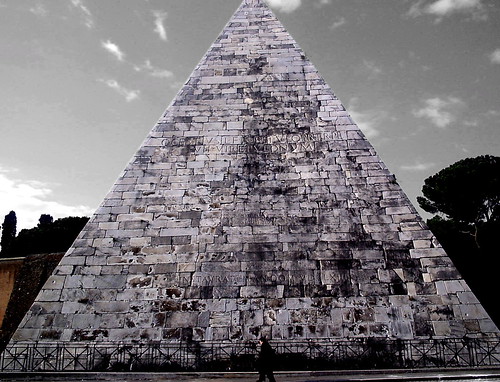
The Pyramid of Cestius, Rome, Italy. Image Attribution: zacharym
There’s not an awful lot to say about this pyramid, other than it’s white, it’s Roman and it’s pyramid shaped! Nestled in the city’s fortifications this pyramid is possibly one of the best-preserved ancient buildings in Rome. The brick-faced concrete structure covered white marble slabs was built between 18 – 12BC as a tomb for the magistrate Gaius Cestius Epulo.
Measuring just 30 m² at the base and standing 36.4 m high, the interior burial chamber is a simple barrel-vaulted rectangular cavity measuring 5.95m long, 4.10m wide and 4.80m high. There is no exterior entrance as the tomb was sealed when it was built.
Read more about the Pyramid of Cestius at Heritage Key!
Más sobre Pyramid of Cestius, Rome
4: Pyramid of Cholula, Puebla, Mexico

Pyramid of Cholula, Puebla, Mexico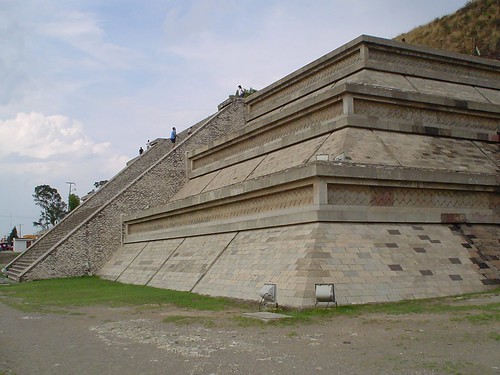
The Pyramid of Hellinikon. Image Attribution: Guadalupe M
This pyramid holds the accolade of being both the largest and the oldest continuously occupied building in Mesoamerica. Unlike Egyptian pyramids, the Mesoamerican ones were usually temples and their imposing size and strange carvings create a truly mystical aura.
Dedicated to the Aztec sky and creator deity Quetzalcoatl, this pyramid has a staggering 450m x 450m base and a height of 66m. The pyramid appears as a grassy hill initially, but archaeologists have reconstructed one side of one of the lower segments and visitors can explore some five miles of tunnels.
Read more about the Pyramid of Cholula at Heritage Key!
Más sobre Pyramid of Cholula, Puebla, Mexico
5: Pyramid of Djoser, Egypt

Pyramid of Djoser, Egypt
The Pyramid of Djoser. Image Attribution: Xavier Fargas
The Pyramid of Djoser (Zoser), also known as the step pyramid, is an archeological remain in the Saqqara necropolis, which once served the ancient Egyptian capital Memphis.
This first Egyptian pyramid consisted of six mastabas (of decreasing size) built on top of each another. The pyramid originally stood 62m high, and had a base of 109 x 125m. The step pyramid was clad in polished white limestone and is considered to be one of the earliest large-scale stone constructions.
Read more about the Pyramid of Djoser at Heritage Key!
Más sobre Pyramid of Djoser, Egypt
6: Pyramid of Hellinikon

Pyramid of Hellinikon, Greece
The Pyramid of Hellinikon. Image Attribution: Schuppi
The ancient Greek scholar Pausanias described this structure as "Something that resembled a pyramid with the decorations of Argolic shields, showing the military connection to it". He thought the building was " a cenotaph for the dead fallen in a fratricidal battle 4,000 years ago". No one believed him then, but modern dating has put the building at 2730BC.
Although a lot smaller, (the base is 9m x 7m), its style is very similar to those found in Egypt. The limestone was quarried locally and the stones cut to fit. Some argue this pyramid can’t be classed as a pyramid as its construction would make it difficult to come together in a point and it’s thought the top would have been a platform.
Read more about the Pyramid of Hellinikon at Heritage Key!
Más sobre Pyramid of Hellinikon
7: Pyramid of the Sun, Teotihuacan, Near Mexico City, Mexico

Pyramid of the Sun, Teotihuacan, Near Mexico City, Mexico
The Pyramid of the Sun. Image Attribution: Dmitry Rukhlenko
The towering Pyramid of the Sun, the third largest in the world, is a striking structure in the ancient city of Teotihuacan. Its base is nearly the same size as Great Pyramid of Egypt, and it towers over the other numerous pyramids seen along the ‘Avenue of the Dead’. Construction was believed to have started around the year zero, in two construction phases.
Something of an enigma, the pyramid’s original name and function are unknown. However, as the Mesoamerican belief saw caves as gateways to the spiritual world and this pyramid is built over a natural cave, it may have been a focus for shamanistic rituals from a much earlier period.
Read more about the Pyramid of the Sun at Heritage Key!
Más sobre Pyramid of the Sun, Teotihuacan, Near Mexico City, Mexico
8: Pyramids of Sneferu, Meidum and Dahshur

Pyramids of Sneferu, Meidum and Dahshur, Egypt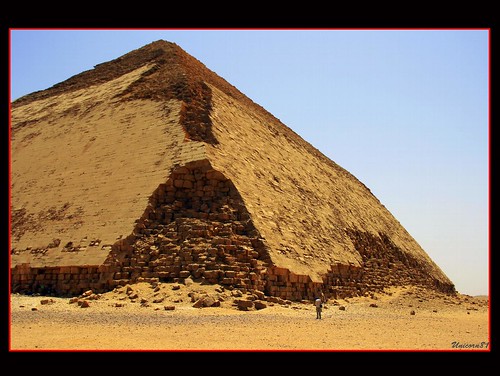
The Pyramids of Sneferu, Meidum and Dahshur. Image Attribution: unicorn81
Pharaoh Sneferu (2613-2589 BCE) was responsible for building three large pyramids in the Egyptian desert, although archaeologists believe he may also have been responsible for two additional smaller ones.
His three main structures were at Meidum (30km south of Cairo) and Dahshur (20km south of Cairo).
Meidum was Sneferu's first pyramid, though it is thought it was originally started by and intended for his predecessor Huni. It is thought that it was a step pyramid that was later transformed into a pyramid with flat sides. However the entire shell is gone, so its original form is difficult to ascertain. What remains is a 65 metere, steep-sided cube with two terraced steps at the top.
Read more about the Pyramids of Sneferu, Meidum and Dahshur at Heritage Key!
Más sobre Pyramids of Sneferu, Meidum and Dahshur
9: The Giza Pyramid Complex, Egypt

The Giza Pyramid Complex, Egypt
The Pyramids of Giza. Image Attribution: ???????
Standing some 8 km distant from the old town of Giza on the Nile, the Giza Nercopolis is one of Egypts most famous ancient landmarks. It contains the famous Great Pyramid, along with the Pyramid of Khafre and the Pyramid of Menkaure, the smallest of the three structures. A number of smaller structures including 'queens' pyramids and valley pyramids stand on the site. To the east of the complex sits the Sphinx.
Although Khufu's Great Pyramid is the largest, it appears to be dwarfed by Khafre's Pyramid because this is built on higher ground and has a steeper incline to its sides.
Read more about the Pyramids of Giza at Heritage Key!
Más sobre The Giza Pyramid Complex, Egypt
10: The Great White Pyramid (Maoling Mausoleum), Xi'an, China

The Great White Pyramid (Maoling Mausoleum), Xi'an, China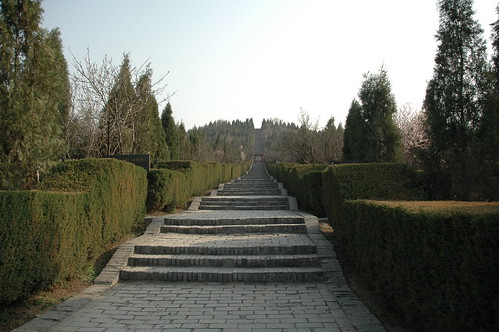
Maoling Mausoleum. Image Attribution: Jon Himoff
About 25 miles northwest of the huge city of Xi'an, in the centre of China, lie dozens of historical mausoleums - known as 'The Pyramids of China.' One of the most famous of these is the Maoling Mausoleum; noted because it is both the biggest and the final resting place of one of the Western Han dynasty's most beloved rulers.
During his 54-year reign between 140 and 87 AD, Emperor Wudi, also known as Liu Che, constructed this huge monument in his glory. It took no less than 53 of those years to complete, and is rumoured to have cost a third of the entire state tax. According to records there were so many burial objects stuffed inside the tomb, there was barely even enough space to fit in the man himself following his demise.
Read more about the Maoling Mausoleum at Heritage Key!
Más sobre The Great White Pyramid (Maoling Mausoleum), Xi'an, China